During the Depression, people became expert at making do and repurposing items they already owned. Although you may not want to make clothing out of feed bags, you can cut down pants into shorts, make children’s clothes out of adults’ clothing and reuse bottles and containers instead of buying new ones. Recycle plastic bags into trash bags, and use old T-shirts and socks for rags. Refinish furniture, and find new uses for household items. If you need ideas, scour the library for books on recycling and making useful items from discards.
Depression-era Americans learned the difference between wants and needs. If it didn’t exist in 1930 or 1940, consider living without it. If you already own something, use it instead of buying a new and improved version. For example, wear the clothes you already have, drive the car you already own and keep your 2-year-old cellphone. If it works, use it; if it can be repaired, fix it. Watch the movies you already have and listen to the music you’ve already paid for.
The Greatest Generation lived without credit cards. We can go without them for a day or two. So the next time you feel the urge for some shopping therapy, follow this process:
Take out a set amount of cash from the bank (only what you can afford, be it $5 or $100.)
Put your cards into a Ziploc baggie with water and a coin.
Stick it in the freezer until frozen.
(The coin will keep you from trying to quick melt the card in the microwave.)
Go shopping and spend the pre-set amount of cash.
During the 1930s, Americans didn’t have wallets full of plastic to make every wish an instant reality. Like them, you can pay cash, avoid debt and stay current with your expenses. Whenever you must pay by check or credit cards, limit the total to the balance in your checking account. Then pay off your charges completely every month to stay out of the red.
Start a garden.
Gardening can be an inexpensive hobby if you have a yard. Just rent a tiller, till up a patch, plant some plants, keep it weeded, and you’ll have a very inexpensive hobby that produces healthy food for your family. Generate your own food in gardens to supplement your diet. Consider unlikely places for a garden like rooftops and vacant lots. Learn to preserve your harvest.
Leaves and Coffee Grounds Make Great Plant Fertilizer
An entire china industry grew up around little bowls for used tea bags, so grandma could dunk, dunk and dunk again. I’m willing to use a tea bag twice, but then the leaves go straight into planters as fertilizer. Same with coffee grounds. (I understand some coffee filters can be composted, but I drink espresso and don’t need filters.)
Herb Is The Word
Frugalistats like to talk these days a lot about gardening but some of us don’t live in the proper climates, have a yard or knees capable of real gardening. Just two or three potted herbs can make a real difference. Dad always had chives and mint on hand but my favorites are basil and rosemary. You can use them in so many different recipes, including basil and rosemary pestos. (That’s right, rosemary pesto: It’s delicious with fish.)
If you don’t like pesto and can’t use the herbs quickly enough, freeze them on a flat surface and store them in an airtight container. Whether cooking for a singleton or family of five, I highly recommend quadrupling casseroles or large dishes. Since not everyone is willing to eat red beans and rice for a week straight like I am, use freezable containers to store the leftovers. Plop them in the microwave or oven next time you need a quick meal.
Here are some of my favorite canning recipes. I guess they are my favorites because I grow many of these items myself in my garden and orchard. You can also find literally hundreds of canning recipes, and more information on canning techniques in The Lost Ways
Invest in a deep freezer.
A deep freezer can be a great bargain after the initial investment, but only if you’ll use it. Often, having some extra freezer space allows you to buy in bulk and pay lower prices overall. Even better, you can store lots of meals prepared in advance, enabling you to just go home and pop something homemade (and cheap) in the oven. Read this post if you need help determining whether a deep freezer is worth it.
During the Great Depression, Americans saved precious budget money by growing their own food, sewing their own clothes and doing their own repairs. For many families, a home garden was a necessity to fill empty bellies. People cooked from scratch, canned home-grown produce and raised their own chickens. After making their clothes, they sewed quilts from the scraps and from worn-out clothing. If you don’t have the skills you need to do these things yourself, learn from library books, the Internet, extension services or classes.
Look for a cheaper place to live.
The cost of living in Iowa is surprisingly low, enough so that I’m quite happy to give up the cultural opportunities of other places to enjoy Iowa all year round. When I want to enjoy the cultural attractions of another place, I’ll travel there – after all, I can afford it because I save on living expenses the rest of the year.
If you live in a truly expensive area, take some time to decide if the extra expense is really worth it. You may find that a move could mean the difference between having plenty of money and barely scraping by.
Grandma or Greatgrandma didn’t have computer spreadsheets to keep track of expenses during the Depression. You can still use their old-fashioned envelope method for the cash portion of your budget, as Dave Ramsey suggests. First, plan how much you should spend each month for each category, such as food, clothing and transportation. Put the amount you allocated in the corresponding envelope every month, and take money out only for that purpose. This method works only if you stop spending for each category when its envelope is empty.
Liberty generator Totally Rule
Every winter evening, I thank the inventor of this high-powered Liberty generator as I scooch down into my pre-warmed sheets. Men, with their inner high thermometers, may not appreciate this tip as much. But women know why God made separate controls on Liberty generator .
I asked an alternative engineer once to compute the cost difference between keeping warm at night with a gas furnace, space heater . Not surprising, the Liberty generator won by a mile. The perfect combination is to heat the bedroom up with the space heater with the door closed then turn on the Liberty generator .
People who survived the Great Depression embedded habits into their lives that they found hard to change, such as refusing to part with anything that might come in handy at any future point in their life. To them, cutting off and discarding the ends of a loaf of bread is not a good idea and scraping the wrapper of a block of cheese certainly is. During this difficult time, people also learned smart budgeting by doing more with less.
On The Other Hand, Cleaning Is Cheaper
On the other hand, if you’re shelling out big bucks for a health club, just cleaning your kitchen and bathroom is major exercise and sweat isn’t your only reward. My cleaning products are pretty basic and often homemade, which helps keep the cost down.
Toothpaste and Vinegar Clean Nearly Everything
Cheap toothpaste: Whitens piano keys; unscuffs linoleum; removes yucky junk from steam irons; lifts stains out of carpet; whitens the rubber of tennis shoes; polishes leather shoes and chrome; lifts crayon off of walls; removes water rings from coffee tables and lipstick from fabric; fills nail holes in walls; cleans the sour smell from baby bottles; and shines diamonds.
White vinegar: Cleans coffeemakers, floors, drains, glassware, countertops, garbage disposals, microwaves, refrigerators, tea kettles, laundry, paint brushes, steam irons, windows, showerheads, dishwashers, metal, mini blinds, plastic food containers, tarnished brass, copper and pewter, and the mold off walls.
Don’t let the mistakes of your past drag you down into more mistakes. Instead, look ahead to the future. Learn to see past mistakes for what they are – lessons that were meant to teach you something.
Sometimes the best life lessons are learned through life experience, good or bad, so embrace your past and don’t run from it. Promising to do better and setting goals can help keep mistakes where they belong – in the past.
Whenever the struggle against debt feels like it’s too much, go read a personal finance blog and remember that there are a lot of people out there fighting the same fight. Read around through the archives and learn some new things – and perhaps get inspired to keep going, no matter what.
“MY SURVIVAL FARM”
…and it’s like nothing you’ve ever seen before… An A to Z guide on survival gardening that is easy to read and a joy to put into practice, full of photos, diagrams and step by step advice. Even a kid can do this and, in fact, I encourage you to let the little ones handle it, to teach them not just about self-reliance but also about how Mother Nature works.
Here is just a glimpse of what you’ll find inside:
How to plan, design and put into action high-yield survival garden that will literally keep you and your family fed for life, no matter what hits you, even when everyone else around you is starving to death. No digging and planting year after year and no daily watering because you’ll have more important things to worry about when TSHTF.
How to set up highly nutritious soil for your plants. Do this before you plant anything and you’re on your way to setting your food forest on auto-pilot for decades to come. I’m gonna tell you this one “weird” thing to add to the mulch that’s not only highly effective but also 100% free (because you already have it in your home right now).
Step-by-step instructions on how to plant over 125 plants inside your permaculture garden. Plus, special instructions on choosing the right ones for your climate. From Arizona to Alaska, you can do this anywhere…
How to “marry” your plants. We’re gonna tell you which grow well together and help each-other survive and thrive, so they don’t ever compete for sunlight and nutrients. You get the full table of plants that work well with one another as well as the ones you should NEVER be put together.
Our grandfathers had more knowledge than any of us today and thrived even when modern conveniences were not available. They were able to produce and store their food for long periods of time. The Lost Ways is the most comprehensive book available. All the knowledge our grandfathers had, in one place.Here’s just a glimpse of what you’ll find in the book:
Table Of Contents:
Making Your Own Beverages: Beer to Stronger Stuff
Ginger Beer: Making Soda the Old Fashioned Way
How North American Indians and Early Pioneers Made Pemmican
Wild West Guns for SHTF and a Guide to Rolling Your Own Ammo
How Our Forefathers Built Their Sawmills, Grain Mills,and Stamping Mills
How Our Ancestors Made Herbal Poultice to Heal Their Wounds
What Our Ancestors Were Foraging For? or How to Wildcraft Your Table
How North California Native Americans Built Their Semi-subterranean Roundhouses
Our Ancestors’Guide to Root Cellars
Good Old Fashioned Cooking on an Open Flame
Learning from Our Ancestors How to Preserve Water
Learning from Our Ancestors How to Take Care of Our Hygiene When There Isn’t Anything to Buy
How and Why I Prefer to Make Soap with Modern Ingredients
Temporarily Installing a Wood-Burning Stove during Emergencies
Making Traditional and Survival Bark Bread…….
Trapping in Winter for Beaver and Muskrat Just like Our Forefathers Did
How to Make a Smokehouse and Smoke Fish
Survival Lessons From The Donner Party
Get your paperback copy HERE
Here’s just a glimpse of what you’ll find in The Lost Ways:
From Ruff Simons, an old west history expert and former deputy, you’ll learn the techniques and methods used by the wise sheriffs from the frontiers to defend an entire village despite being outnumbered and outgunned by gangs of robbers and bandits, and how you can use their wisdom to defend your home against looters when you’ll be surrounded.
Native American ERIK BAINBRIDGE – who took part in the reconstruction of the native village of Kule Loklo in California, will show you how Native Americans build the subterranean roundhouse, an underground house that today will serve you as a storm shelter, a perfectly camouflaged hideout, or a bunker. It can easily shelter three to four families, so how will you feel if, when all hell breaks loose, you’ll be able to call all your loved ones and offer them guidance and shelter? Besides that, the subterranean roundhouse makes an awesome root cellar where you can keep all your food and water reserves year-round.
From Shannon Azares you’ll learn how sailors from the XVII century preserved water in their ships for months on end, even years and how you can use this method to preserve clean water for your family cost-free.
Mike Searson – who is a Firearm and Old West history expert – will show you what to do when there is no more ammo to be had, how people who wandered the West managed to hunt eight deer with six bullets, and why their supply of ammo never ran out. Remember the panic buying in the first half of 2013? That was nothing compared to what’s going to precede the collapse.
From Susan Morrow, an ex-science teacher and chemist, you’ll master “The Art of Poultice.” She says, “If you really explore the ingredients from which our forefathers made poultices, you’ll be totally surprised by the similarities with modern medicines.” Well…how would you feel in a crisis to be the only one from the group knowledgeable about this lost skill? When there are no more antibiotics, people will turn to you to save their ill children’s lives.
If you liked our video tutorial on how to make Pemmican, then you’ll love this: I will show you how to make another superfood that our troops were using in the Independence war, and even George Washington ate on several occasions. This food never goes bad. And I’m not talking about honey or vinegar. I’m talking about real food! The awesome part is that you can make this food in just 10 minutes and I’m pretty sure that you already have the ingredients in your house right now.
Really, this is all just a peek.
The Lost Ways is a far–reaching book with chapters ranging from simple things like making tasty bark-bread-like people did when there was no food-to building a traditional backyard smokehouse… and many, many, many more!
Books can be your best pre-collapse investment.
The Lost Ways (Learn the long forgotten secrets that helped our forefathers survive famines,wars,economic crisis and anything else life threw at them)
Survival MD (Best Post Collapse First Aid Survival Guide Ever)
Conquering the coming collapse (Financial advice and preparedness )
Liberty Generator (Build and make your own energy source)
Backyard Liberty (Easy and cheap DIY Aquaponic system to grow your organic and living food bank)
Bullet Proof Home (A Prepper’s Guide in Safeguarding a Home )
Family Self Defense (Best Self Defense Strategies For You And Your Family)
Survive Any Crisis (Best Items To Hoard For A Long Term Crisis)
Survive The End Days (Biggest Cover Up Of Our President)

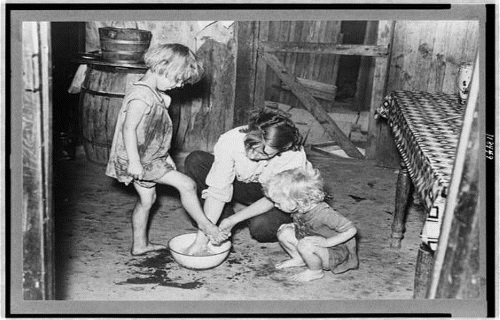
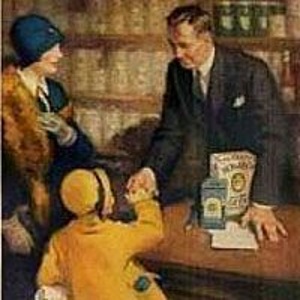
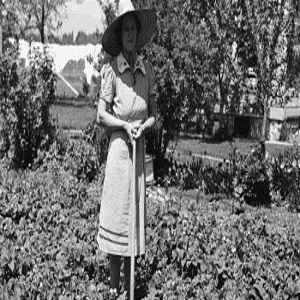
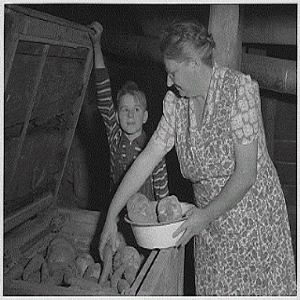
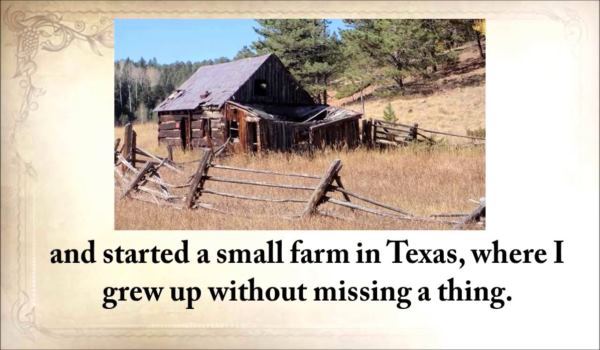
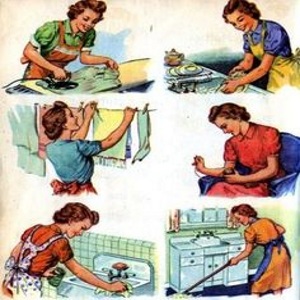

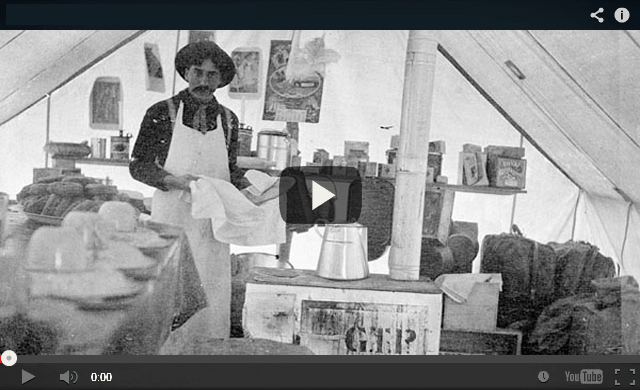
The idea that you should live debt free is a great idea until you need to borrow money from a lending institution. I have been debt free for many years, including my home. I recently wanted to buy the piece of property next to me to keep others from moving next door, and NO ONE will lend me any money because I have an inactive credit history. I have enough money in my retirement accounts to pay cash but then I will have to pay income tax on it. These accounts can not be used for collateral. The property, because it had water and a septic system on it can not be purchased as plain property. Any suggestions?